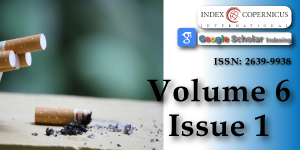Addiction and leadership: How authentic and transformative leaders are emerging from the adversity of substance use disorder
Main Article Content
Abstract
Objectives: This novel study explores the leadership traits held by people with substance use disorder. The purpose of this study is to help advance understanding of the positive qualities people with substance use disorder possess which can produce positive societal and organizational benefits once that person enters recovery. Additionally, this understanding can provide insight into effective treatment approaches that incorporate personal attributes that are present within active addiction.
Methods: A qualitative methodology was used which included semi-structured interviews, observations, and a focus group which allowed the researcher to conduct a thematic coding analysis. The participants came from diverse backgrounds and included participants from multiple regions across the United States. Leadership was defined as having various dimensions of effective leadership that are found in both Transformational and Authentic Leadership Theories.
Results: The findings revealed that people in addiction possess numerous leadership traits which position them for effective leadership and are further enhanced during their recovery journey. The top three traits which emerged from the data indicate that people in recovery from addiction are authentic, tenacious, and empathetic. Additionally, those in recovery have strong abilities to empower and inspire others and demonstrate posttraumatic growth which helps establish significant bonds of trust and commitment among followers.
Conclusion: The impact of this study will change how people view addiction. Identifying the hidden treasures of leadership which are present in those struggling with addiction could illuminate recovery pathways that help identify purpose and value. This would not only advance treatment opportunities but greatly assist organizations that need strong leadership. People with substance use disorder have all the right tools to become effective leaders, and this understanding can help mitigate the stigma associated with addiction and paint it in a more positive light.
Article Details
Copyright (c) 2022 Roop J.

This work is licensed under a Creative Commons Attribution 4.0 International License.
Sharma M. Research and Google Trend for Human Neuropsychiatric Disorders and Machine Learning: A Brief Report. Psychiatr Danub. 2021 Fall;33(3):354-357. doi: 10.24869/psyd.2021.354. PMID: 34795178.
Grecco GG, Andrew Chambers R. The Penrose Effect and its acceleration by the war on drugs: a crisis of untranslated neuroscience and untreated addiction and mental illness. Transl Psychiatry. 2019 Nov 28;9(1):320. doi: 10.1038/s41398-019-0661-9. PMID: 31780638; PMCID: PMC6882902.
Finkelstein S. Superbosses: How exceptional leaders master the flow of talent. Penguin. 2016.
Moskalewicz M. Three modes of distorted temporal experience in addiction: Daily life, drug ecstasy, and recovery. A phenomenological perspective. Archiwum Historii Filozofii I Myśli Społecznej. 2016. 197-212.
George B. Authentic leadership: Rediscovering the secrets to creating lasting value.John Wiley & Sons. 2003.
Northouse PG. Leadership: Theory and practice. Sage publications. 2018.
Hofstede G, Van Deusen CA, Mueller CB, Charles TA. What goals do business leaders pursue? A study in fifteen countries. Journal of International Business Studies. 2002; 33(4): 785-803.
Dill B, Holton R. The Addict in Us all. Front Psychiatry. 2014 Oct 9;5:139. doi: 10.3389/fpsyt.2014.00139. PMID: 25346699; PMCID: PMC4191137.
Caetano PA, Lam JM, Morgan SG. Toward a standard definition and measurement of persistence with drug therapy: Examples from research on statin and antihypertensive utilization. Clin Ther. 2006 Sep;28(9):1411-24; discussion 1410. doi: 10.1016/j.clinthera.2006.09.021. PMID: 17062314.
Ntoumanis N, Healy LC, Sedikides C, Duda J, Stewart B, Smith A, Bond J. When the going gets tough: the "why" of goal striving matters. J Pers. 2014 Jun;82(3):225-36. doi: 10.1111/jopy.12047. Epub 2013 Aug 7. PMID: 23750603; PMCID: PMC4288988.
Lewis M. The biology of desire: Why addiction is not a disease. PublicAffairs. 2015.
McGuire AP, Mota NP, Sippel LM, Connolly KM, Lyons JA. Increased Resilience is Associated with Positive Treatment Outcomes for Veterans with Comorbid PTSD and Substance Use Disorders. J Dual Diagn. 2018 Jul-Sep;14(3):181-186. doi: 10.1080/15504263.2018.1464237. Epub 2018 May 21. PMID: 29668364.
Elkington R, Breen JM. How senior leaders develop resilience in adversity: A qualitative study. Journal of Leadership, Accountability and Ethics. 2015; 12(4): 93.
Janson A. Extracting leadership knowledge from formative experiences. Leadership Quarterly. 2008; 4(1): 73-94.
Brown HE, Lafferty ME, Triggs C. In the face of adversity: Resiliency in winter sport athletes. Science & Sports. 2015; 30(5): e105-e117.
Haroosh E, Freedman S. Posttraumatic growth and recovery from addiction. Eur J Psychotraumatol. 2017 Sep 13;8(1):1369832. doi: 10.1080/20008198.2017.1369832. PMID: 29038678; PMCID: PMC5632763.
Dawson DA, Grant BF, Stinson FS, Chou PS. Maturing out of alcohol dependence: the impact of transitional life events. J Stud Alcohol. 2006 Mar;67(2):195-203. doi: 10.15288/jsa.2006.67.195. PMID: 16568565.
Tebes JK, Irish JT, Puglisi Vasquez MJ, Perkins DV. Cognitive transformation as a marker of resilience. Subst Use Misuse. 2004 Apr;39(5):769-88. doi: 10.1081/ja-120034015. PMID: 15202808.
Fairholm MR, Fairholm G. Leadership amid the constraints of trust. Leadership & Organization Development Journal. 2000.
Burns JM. Transforming Leadership. Grove Press. 2004.
Bass BM, Riggio RE. Transformational leadership. Psychology press. 2006.
Mureithi WN, Stewart JM, Brooks AC, Gastfriend DR. Patient Needs in Integrated Opioid Addiction Treatment: Qualitative Findings from a Pilot Study. In APHA's 2019 Annual Meeting and Expo (Nov. 2-Nov. 6). APHA. 2019.
Maxwell JC. Developing the leaders around you: How to help others reach their full potential. HarperCollins Leadership. 1995.
Latifi Z, Soltani M, Mousavi S. Evaluation of the effectiveness of self-healing training on self-compassion, body image concern, and recovery process in patients with skin cancer. Complement Ther Clin Pract. 2020 Aug;40:101180. doi: 10.1016/j.ctcp.2020.101180. Epub 2020 Apr 22. PMID: 32347209.
Fulford MD, Coleman RA. Maximizing the value of values-based leadership (VBL): A reconceptualization for leaders and organizations. Journal of Applied Leadership and Management. 2021; 9: 61-72.
Hildon Z, Smith G, Netuveli G, Blane D. Understanding adversity and resilience at older ages. Sociol Health Illn. 2008 Jul;30(5):726-40. doi: 10.1111/j.1467-9566.2008.01087.x. Epub 2008 Apr 28. PMID: 18444953.
American Society of Addictive Medicine (2011). The ASAM Criteria. https://www.asam.org/Quality-Science/definition-of-addiction
Calhoun LG, Tedeschi RG. Handbook of posttraumatic growth: Research and practice. Routledge. 2004
American Psychiatric Association (2019) Diagnostic and statistical manual of mental disorders, edn 5. Washington, DC: American Psychiatric Association Press.

